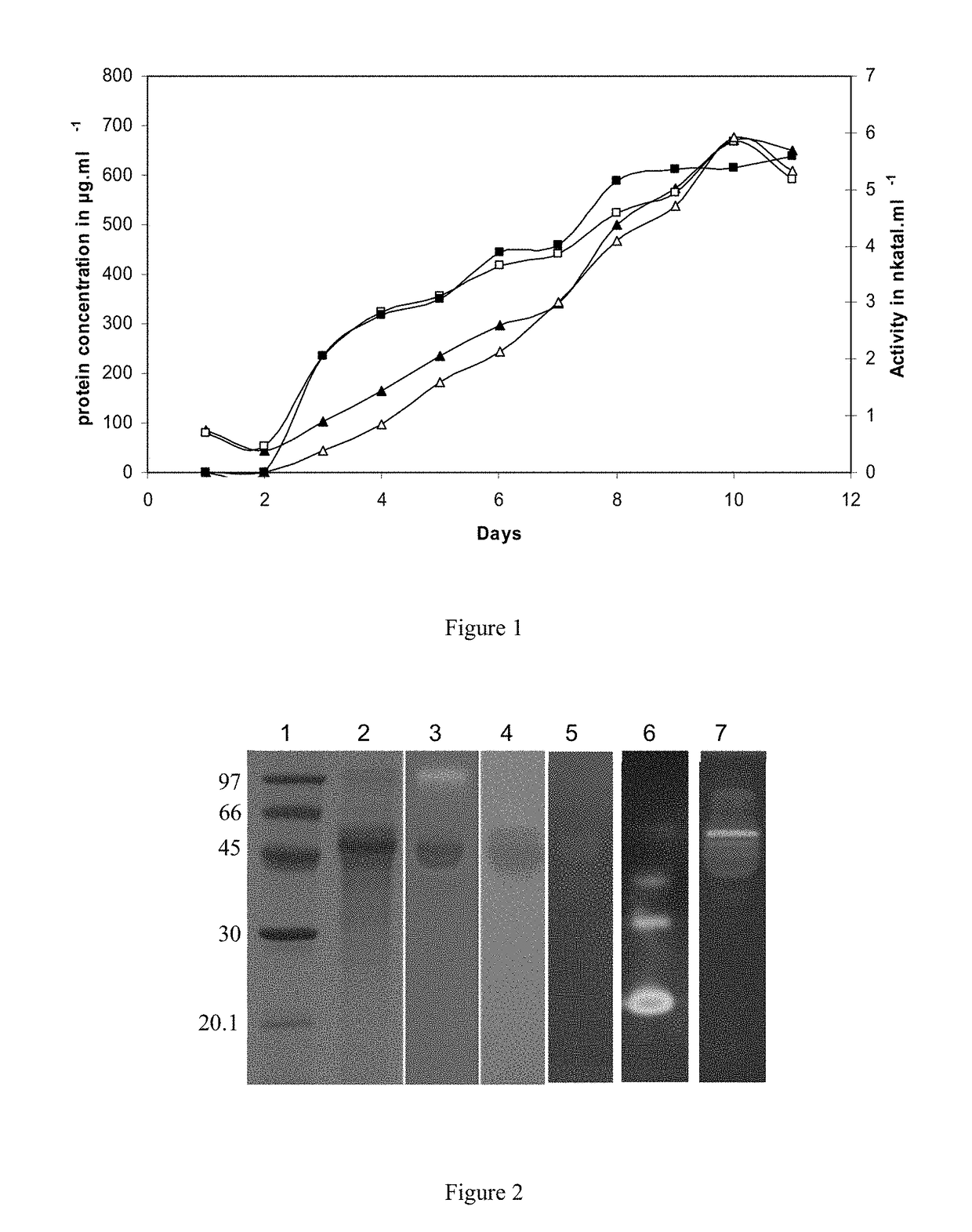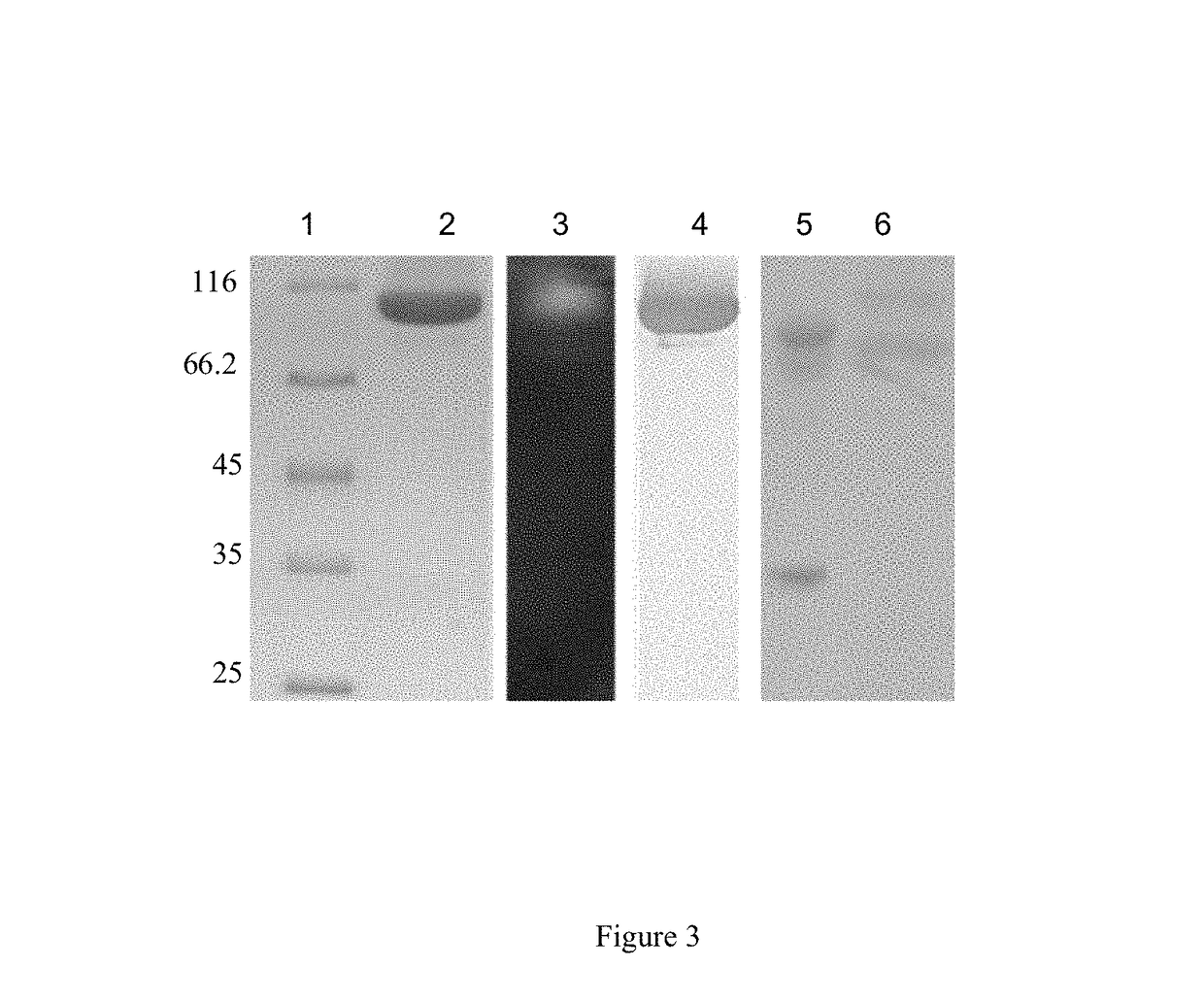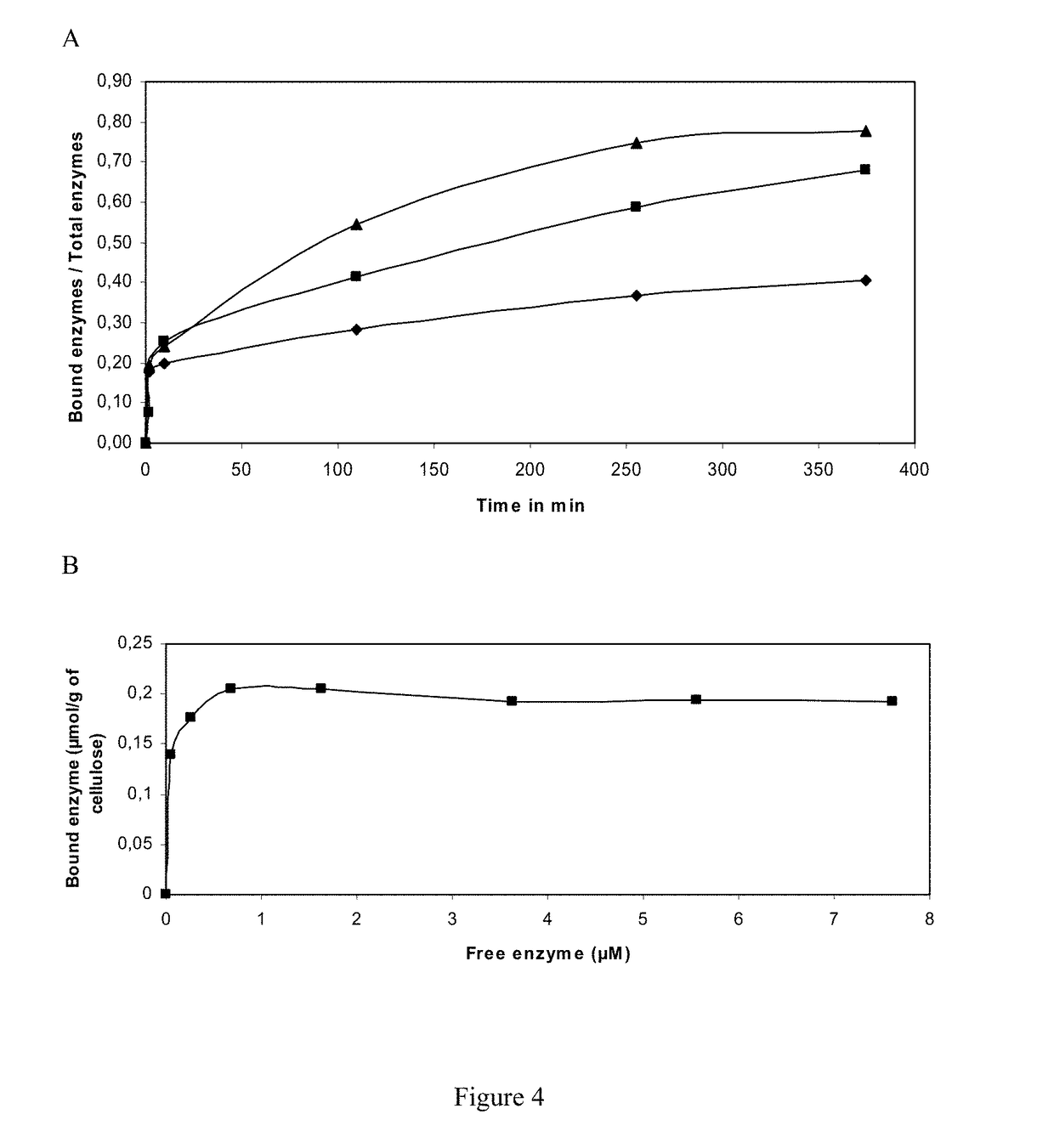Compositions comprising cellobiose dehydrogenase from Pycnoporus cinnabarinus and their use for the degradation of lignocellulosic biomass
a cellobiose and biomass technology, applied in the field of enzyme compositions, can solve the problems of affecting conversion costs, less research on cdhs, and incomplete understanding of cellulolytic systems, and achieve the effect of increasing the overall degradation of lignocellulose and increasing the production of gluconic acid
- Summary
- Abstract
- Description
- Claims
- Application Information
AI Technical Summary
Benefits of technology
Problems solved by technology
Method used
Image
Examples
example 1
Production of a Recombinant P. cinnabarinus CDH and Tests of Lignocellulosic Degradation with Compositions Comprising an Enzyme Cocktail of Cellulases from T. reesei and CDH from P. cinnabarinus
[0159]Biological Material
[0160]P. cinnabarinus ss3 monokaryotic strain BRFM 137 isolated from the fruit-like structure of the P. cinnabarinus I-937 dikaryotic strain was maintained as previously described (Herpoel, I., et al, 2000, FEMS Microbiology Letters, vol. 183, pp: 301-306). P. pastoris strain X33 is a component of the Pichia Easy Select Expression System and the pPICZαA vector (INVITROGEN, Cergy-Pontoise, France).
[0161]Media and Culture Conditions
[0162]P. cinnabarinus was grown at 30° C. on MYA2 plates (maltose: 20 g·l−1; yeast extract: 1 g·l−1; agar 16 g·l−1). After 10 days of incubation, precultures in Roux flasks containing 200 ml of medium according to Sigoillot et al. (1996, Applied and Environemental Microbiology, vol. 62, pp: 1329-1335) were inoculated by five disks of P. cinn...
example 2
Production of Sugars—Determination of Sugar Yield in Mg of Sugars Formed / g of Beechwood Xylan after 72 h of Enzymatic Treatment on Xylan
[0236]Saccharification assays were performed in 20 mL of 50 mM sodium phosphate buffer (pH 4.8) containing 5% (w / v) beechwoodxylan.
[0237]Purified rCDH was assayed in the presence of cellulase cocktail at 45° C. with an orbital agitation (140 rpm) during 72 h.
[0238]C: control reaction was performed with GC 220 containing xylanase activity without CDH. Sugars were quantified by high-performance anion exchange chromatography (HPAEC) coupled with amperometric detection (PAD) equipped with a Carbo-Pac PA-1 analytical column
[0239]These experiments were repeated at least three times with similar results. For all-sugars analysis statistical significance was P<0.05 respectively. The results are shown on FIG. 8.
[0240]GC220 (Genencor-Danisco, Rochester, N.Y., USA) from T. reesei contained 1.41 U CMCase, 0.79 U β-glucosidase, 0.11 U cellobiohydrolase, 3.85 U xy...
example 3
Synergistic Action of Cellobiose Dehydrogenase from Pycnoporus cinnabarinus and GH161 from Podospora anserina
[0242]In this work, we used a combination of CDH from the basidiomycete Pycnoporus cinnabarinus and two GH61 from the brown-rot ascomycete Podospora anserina both heterologously expressed in Pichia pastoris. Synergistic action enzymes are observed on PASC.
Materials and Methods
[0243]Biological Material
[0244]P. anserina strain S mat+ was provided by Pr. P. Silar (UMR 8621 CNRS, Orsay). Heterologous expression of rCDH from P. cinnabarinus ss3 monokaryotic strain BRFM 137 was described in Bey et al (2011, Microbial Cell Factories, 10:113). P. pastoris strain X33 and the pPICZαA vector are components of the Pichia Easy Select Expression System (INVITROGEN).
[0245]Media and Culture Conditions
[0246]P. anserina S mat+ was grown at 27° C. on M2 plates (KH2PO4: 0.25 g / l; K2HPO4: 0.3 g / l; MgSO4.7H2O: 0.25 g / l; urea: 0.5 g / l; thiamine: 0.05 g / l; biotin: 0.25 μg / l; citric acid: 2.5 mg / l; ...
PUM
| Property | Measurement | Unit |
|---|---|---|
| temperature | aaaaa | aaaaa |
| temperature | aaaaa | aaaaa |
| temperature | aaaaa | aaaaa |
Abstract
Description
Claims
Application Information
 Login to View More
Login to View More - R&D
- Intellectual Property
- Life Sciences
- Materials
- Tech Scout
- Unparalleled Data Quality
- Higher Quality Content
- 60% Fewer Hallucinations
Browse by: Latest US Patents, China's latest patents, Technical Efficacy Thesaurus, Application Domain, Technology Topic, Popular Technical Reports.
© 2025 PatSnap. All rights reserved.Legal|Privacy policy|Modern Slavery Act Transparency Statement|Sitemap|About US| Contact US: help@patsnap.com



